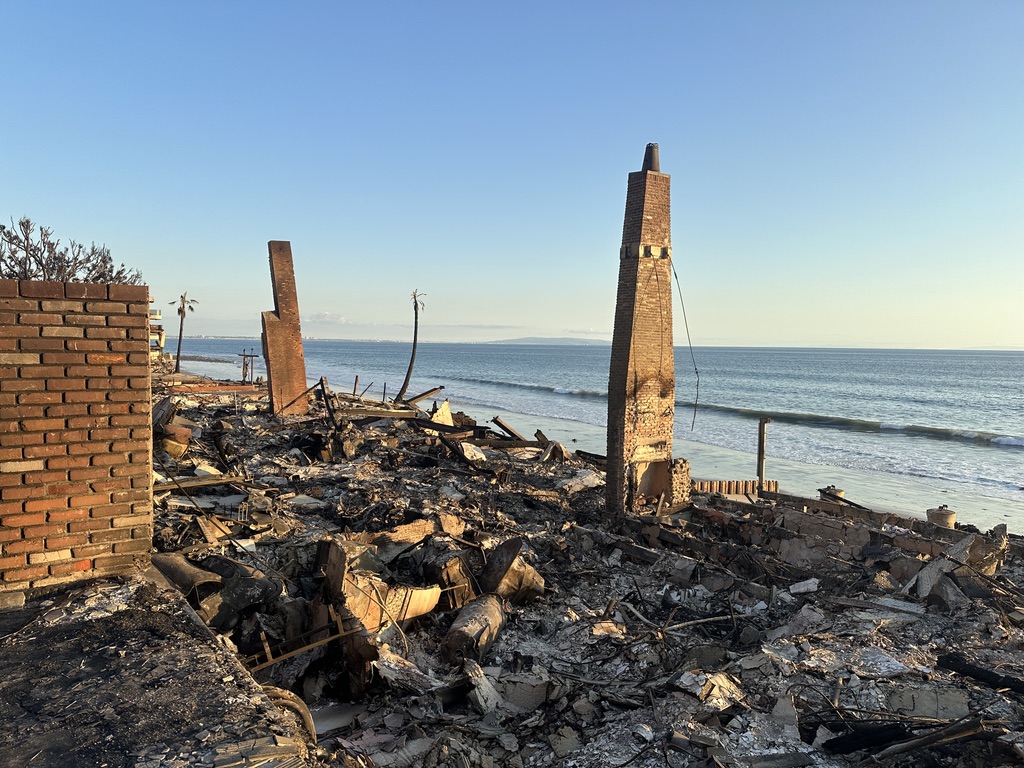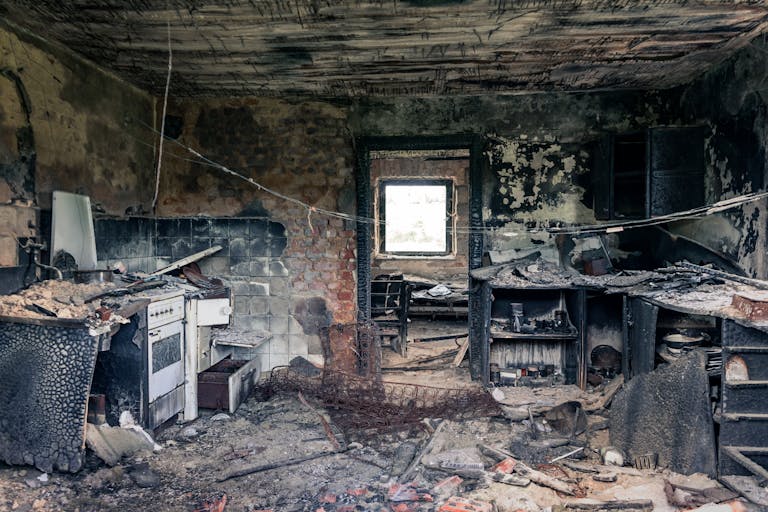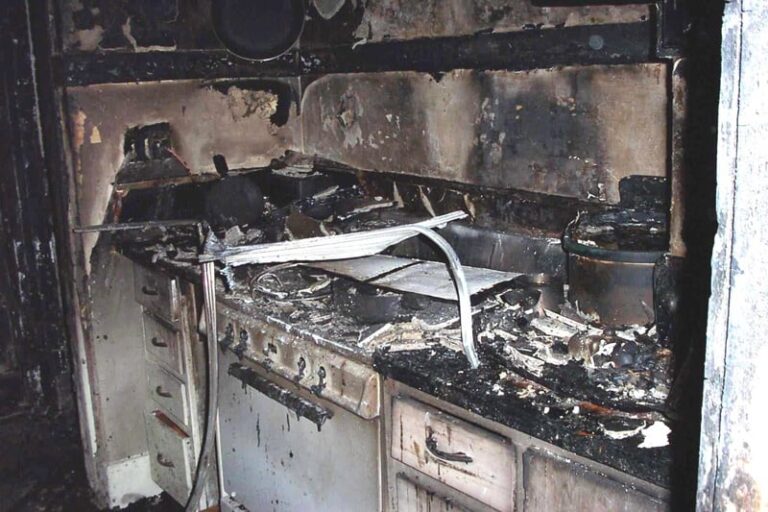Understanding the Long-Term Effects of Fire Damage on Structural Integrity
Fire is one of the most destructive forces that can impact a building or home. While the immediate damage caused by flames, heat, and smoke is readily apparent, the long-term effects of fire damage can be more insidious and difficult to identify and address. Understanding these potential long-term consequences is crucial for property owners, insurance companies, and restoration professionals to ensure that structures are properly repaired and restored following a fire.
Structural Integrity Compromise
One of the most significant long-term effects of fire damage is the potential compromise of a structure’s integrity. During a fire, the intense heat can cause building materials to weaken, warp, or even melt. This damage may not be immediately visible but can have severe consequences for the stability and safety of the structure over time.
Weakening of Steel and Concrete
Steel and concrete are common building materials used in the construction of many structures. While these materials are known for their strength and durability, exposure to extreme temperatures during a fire can significantly weaken them.
Steel begins to lose its structural integrity at temperatures around 1,100°F (593°C). As the temperature rises, the steel’s yield strength decreases, making it more susceptible to bending and deformation under load. In some cases, the heat may cause the steel to expand and then contract as it cools, leading to permanent distortion or even fracturing.
Concrete, although highly fire-resistant, can also suffer long-term damage due to extreme heat. When exposed to temperatures above 1,100°F (593°C), concrete undergoes a process called spalling, where the surface layer of the material flakes off or explodes. This can expose the reinforcing steel bars within the concrete, making them vulnerable to heat damage and corrosion.
Damage to Wood Framing
Wood is another common building material, particularly in residential structures. When exposed to fire, wood can char, burn, and lose its structural integrity. The extent of the damage depends on the duration and intensity of the fire, as well as the type of wood and its moisture content.
In some cases, the damage to wood framing may be visible immediately after the fire. Charring, cracking, and discoloration are all signs that the wood has been compromised. However, even if the damage is not readily apparent, the heat from the fire can cause the wood to dry out and become brittle over time. This weakening of the wood can lead to structural issues, such as sagging floors or roof collapse, long after the fire has been extinguished.
Here is an article for further information
Hidden Damage to Building Systems
In addition to the visible damage caused by fire, there may also be hidden damage to a structure’s various building systems. Electrical wiring, plumbing, and HVAC systems can all be compromised by heat, smoke, and corrosive byproducts of the fire.
Electrical wiring, for example, can be damaged by heat, causing the insulation to melt or the wires to short circuit. This damage may not be immediately apparent but can pose a serious fire hazard if not addressed. Similarly, plumbing pipes can warp or leak due to heat exposure, leading to water damage and potential mold growth.
HVAC systems can also suffer long-term damage from fire. Smoke and soot can clog filters, ducts, and vents, reducing the system’s efficiency and potentially spreading contaminated air throughout. Heat damage to the system’s components can also lead to malfunctions and premature failure.
Smoke and Soot Damage
In addition to the direct fire damage caused by flames and heat, smoke and soot can have long-lasting effects on a structure and its contents. Smoke is a complex mixture of gases, particulates, and chemicals produced by the burning of various materials. On the other hand, incomplete combustion of materials creates soot—fine black particles composed primarily of carbon.
Persistence of Odors
One of the most noticeable long-term effects of smoke and soot damage is the persistence of unpleasant odors. Smoke can permeate porous materials such as drywall, carpeting, and upholstery. Leaving behind a strong, acrid smell that can linger for months or even years after the fire.
These odors are not only unpleasant but can also be a health hazard, particularly for individuals with respiratory issues or allergies. In some cases, severe odors can make the structure uninhabitable until professionals complete proper odor removal and decontamination.
Corrosion and Etching
Smoke and soot contain various chemicals that can be corrosive to metal surfaces and etch or stain glass, plastic, and other smooth surfaces. Over time, this corrosion and etching can lead to permanent damage or discoloration of the affected materials.
For example, the acidic nature of soot can cause metal fixtures, appliances, and structural components to rust or tarnish. This damage may not be immediately apparent but can worsen over time, leading to the need for costly repairs or replacements.
Similarly, soot can etch or stain glass, ceramic tiles, and plastic surfaces, leaving behind permanent marks or discoloration. This damage can be particularly problematic in kitchens and bathrooms, where the affected surfaces may be difficult or impossible to clean effectively.
Long-Term Health Concerns with Fire Damage
Smoke and soot not only cause aesthetic and structural damage but also pose potential long-term health risks to those exposed. Smoke contains a variety of toxic chemicals, including carbon monoxide, hydrogen cyanide, and benzene, which can be harmful to human health.
Prolonged exposure to smoke and soot can lead to respiratory issues, such as asthma, bronchitis, and COPD. These health problems can develop over time, especially if the structure isn’t properly cleaned and decontaminated, even though they may not appear immediately after the fire.
Moreover, certain materials, when burned, can release toxic substances that pose additional health risks. For example, burning plastics can release dioxins, while burning treated wood can release arsenic and chromium. Exposure to these substances can lead to serious health problems, including cancer and developmental issues.
Water Damage and Mold Growth
Another significant long-term effect of fire damage is the potential for water damage and mold growth. Firefighters often use large amounts of water to douse the flames during the process of extinguishing a fire. While this water is necessary to control the fire, it can also lead to significant damage to the structure and its contents.
Saturation of Building Materials
As water is applied to the fire, it can seep into various building materials, such as drywall, insulation, and flooring. These materials can become saturated, leading to structural damage and the potential for mold growth.
Drywall, for example, is highly susceptible to water damage. When exposed to moisture, the gypsum core of the drywall can absorb water, causing the material to soften, swell, and eventually crumble. This damage may not be immediately visible but can compromise the structural integrity of walls and ceilings over time.
Similarly, insulation materials, such as fiberglass batting or cellulose, can absorb water and lose their insulating properties. This not only reduces the energy efficiency of the structure but can also lead to the development of mold and mildew within the walls.
Mold and Mildew Growth
One of the most significant long-term risks associated with water damage following a fire is the potential for mold and mildew growth. Mold spores are ubiquitous in the environment and can quickly colonize damp or wet materials, spreading throughout the structure.
Mold growth can lead to a variety of health problems, including respiratory issues, allergic reactions, and immune system disorders. Some mold species, such as Stachybotrys chartarum (black mold), can produce toxic compounds known as mycotoxins. Mycotoxins can cause severe health effects in some individuals.
In addition to the health risks, mold growth can also cause significant damage to the structure and its contents. As mold colonies grow, they can digest organic materials, such as wood, paper, and fabric, leading to permanent damage and deterioration.
Hidden Water Damage
One challenge with water damage after a fire is that it often hides beneath surfaces, making it difficult to detect. Water can seep into wall cavities, beneath flooring, and into other hard-to-reach areas, making it difficult to identify and address the full extent of the damage.
If not properly dried and treated, these hidden pockets of moisture can lead to long-term structural damage and mold growth. It is essential for restoration professionals to use specialized equipment, such as moisture meters and infrared cameras to identify and address hidden water damage throughout the structure.
Psychological and Emotional Impact
Beyond the physical damage caused by fire, the long-term effects can also include significant psychological and emotional impacts on the occupants of the affected structure. Experiencing a fire can be a traumatic event, leading to feelings of fear, anxiety, and loss.
Displacement and Loss of Possessions
One of the most immediate consequences of a fire is the potential displacement of the occupants from their home or workplace. Depending on the extent of the damage, individuals may need to temporarily or permanently relocate while contractors complete repairs and restoration work.
This displacement can be highly disruptive, forcing individuals to adapt to new living situations and routines. The loss of familiar surroundings and personal possessions can also contribute to feelings of grief and emotional distress.
In some cases, irreplaceable items, such as family heirlooms, photographs, or sentimental objects, may be lost in the fire. This loss can be particularly challenging to cope with, as these items often hold deep emotional value and cannot be easily replaced.
Post-Traumatic Stress Disorder (PTSD)
For some individuals, the trauma of experiencing a fire can lead to the development of post-traumatic stress disorder (PTSD). A traumatic event like a fire can trigger PTSD, a mental health condition characterized by symptoms such as:
- Intrusive memories or flashbacks of the event
- Avoidance of reminders of the trauma
- Negative changes in mood and cognition
- Hyperarousal and reactivity
Individuals with PTSD may struggle with daily functioning and may require professional mental health support to manage their symptoms and cope with the long-term emotional impact of the fire.
Importance of Emotional Support and Counseling
Given the potential for long-term psychological and emotional effects following a fire, it is crucial for those affected to have access to emotional support and counseling services. This support can come from a variety of sources, including:
- Family and friends
- Mental health professionals
- Support groups for fire survivors
- Employee assistance programs (for workplace fires)
Providing access to these resources can help individuals process their experiences, develop coping strategies, and build resilience in the face of the challenges posed by the fire and its aftermath.
Conclusion
The long-term effects of fire damage on a structure can be far-reaching and complex, extending well beyond the immediate destruction caused by flames and heat. Compromised structural integrity, hidden damage to building systems, persistent smoke and soot effects, and the risks of water damage and mold growth can continue to affect a structure and its occupants long after the fire is out.
Moreover, experiencing a fire takes a significant psychological and emotional toll. The trauma of displacement, loss of possessions, and potential development of mental health conditions such as PTSD can have lasting effects on individuals and communities.
As such, it is essential for property owners, insurance companies, and restoration professionals to approach fire damage with a comprehensive understanding of these long-term effects. By properly assessing the full extent of the damage, implementing thorough repair and restoration strategies, and providing access to emotional support resources, it is possible to mitigate the long-term impact of fire damage and help those affected to rebuild and recover.




